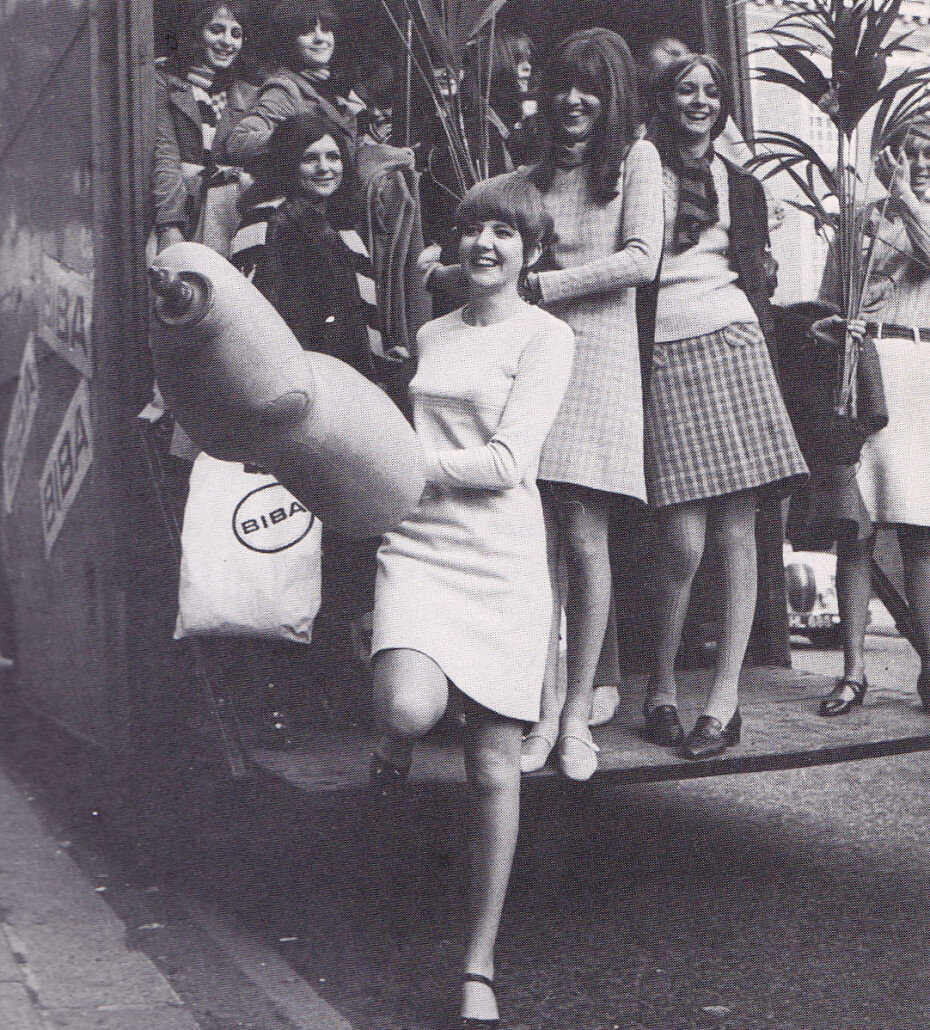1960s Swinging London Fashion
Tracy Xavier
What an interesting time in history of fashion & style. I ran across these sites and had to share. London was the best place in the world in the 1960s. Youth culture flourished and post-war austerity finally gave place to a decade of optimism and exploration – of everything. Rock music was instrumental in youth culture and teenagers and young people were crazy about The Beatles, The Rolling Stones, The Kinks and The Who. Psychedelic rock also grew more popular every day with bands such as Pink Floyd and The Jimmy Hendrix Experience setting a psychedelic underground scene in London. Culture was at its peak and Art schools developed what we know as the 60s.
Fashion icons in the 60s London were Twiggy, Mary Quant, Pattie Boyd, Jane Asher, Jean Shrimpton, members of The Beatles, Pete Townshend of The Who and Brian Jones. First half of the decade was characterized by Mod styles but around 1967. the Mod fashion started to blend heavily with hippie fashions. George Harrison and Pattie Boyd were typical Mod-turned-hippie couple.
Mod fashion became extremely popular among females and Mary Quant encouraged not only this style, but also young people to play with fashion. Post-war generation were the first to have money to buy records, new clothes and makeup. That was ideal because there were dozens of new styles being invented every day, especially in Carnaby Street in London.
Mary Quant invented mini-skirt and this is where all begins in the 1960s fashion. Dresses were becoming shorter and shorter every day until they were covering the legs only ten centimeters. Pop art brought geometric patterns and two-coloured (mostly black-white) dresses. Mini-dresses were often worn with long tight boots. Stripes, dots and other geometrical patterns were everywhere; they decorated the skirts, dresses, blouses… PVC raincoats and bobbed hair were IT for women. Twiggy was known as ”the queen of Mod” and she was ”the face of 1966”
Twiggy wore the shortest dresses ever, but with no neckline. Combined with skin-coloured or white stockings and flats she looked gorgeous with long, skinny legs, bobbed blonde hair and blue eyes with extremely long (false) eyelashes. These kind of dresses were rather simple, high waisted, short-sleeved and in baby doll style. Another look that I find was quite popular was a mini skirt combined with a turtle-neck pullover.
Psychedelic scene developed in London half way through the decade. Syd Barrett was, along with Pink Floyd and The Jimmy Hendrix Experience, instrumental in creating the style. Syd was very fashionable and often wore velvet trousers, bandana knotted like a tie around his neck, blouses with psychedelic prints, waistcoats and colourful shirts. Sunglasses in different shapes and colours were also popular.
At around 1967. Mod fashion started to alter to a new, laid back hippie style. The following year was known as the summer of love, and many festivals helped to promote hippie style. As I already said, George Harrison and Pattie Boyd were fashion icons, mainly representing Mod fashion, but around this time they embraced the new flower power style. Pattie begun wearing paisley printed trousers, waistcoats, lots of jewellery, mini dresses with floral prints, wooden bracelets, wide sleeved blouses, crazy patterns and sandals.
Then there was BIBA”…….what a trip! Great article
It all started in 1964, when a small-time mail order business called Biba’s Postal Boutique advertised a pink gingham dress in the Daily Mirror that was similar to one worn by Brigitte Bardot. Over 4,000 orders were in the next day and went up to 17,000 in total.
The Biba boutique only sold one type of dress in one size, but that didn’t stop young fashionistas from coming. The store was sold out of within an hour on the first day.
But Biba’s real imprint on fashion history however, came with the Big Biba store, which opened in 1973 in a seven-story building, formerly Derry & Toms department store, on Kensington High Street.
A Willy Wonka factory for fashion, the Big Biba store was an extravaganza of crazy interior design and clever marketing. As soon as it opened its doors it was the place to be, attracting up to a million visitors a week, making it one of the most visited tourist attractions in the city.








